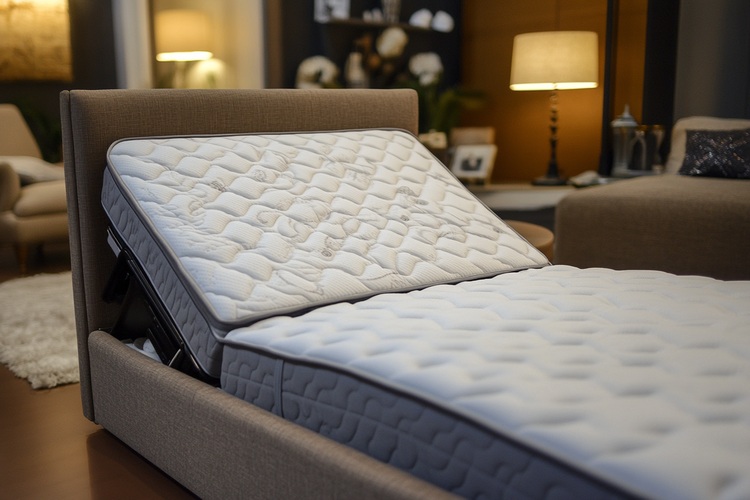Furniture placement tips for comfort and flow
Smart furniture placement changes how a bedroom feels and functions. This article outlines practical, evidence-informed tips to arrange beds, seating, and storage to support sleep, movement, and daily routines. It covers layout, lighting, acoustics, textiles, ventilation, and simple organization strategies to improve overall comfort.

A thoughtfully arranged bedroom can support rest and daily routines without requiring major renovations. This article explains how small adjustments—moving a bed, rethinking a dresser location, or adding a blackout layer—can influence sleep quality, room circulation, and a sense of calm. Practical layout choices can also help regulate temperature and humidity, improve acoustics, and make cleaning and declutter efforts easier.
How does layout affect comfort and flow?
Layout is the foundation of comfort and flow. Place the bed so it is visible from the door but not directly in line with it; this creates a sense of security while keeping walkways clear. Leave at least 60–75 cm (24–30 in) around primary pathways to avoid bumps and support easy circulation. Position larger storage pieces against walls to free central floor space and maintain balance. Consider traffic patterns—avoid placing chairs or small tables where they will interrupt the natural path between door, closet, and bathroom. A coherent layout reduces visual clutter and supports routines.
Where should the mattress and sleep zone be placed?
The mattress anchors the room; its placement directly influences sleep and circadian cues. Place the bed where natural light can reach it in the morning but not strike sleepers directly, which helps align circadian rhythms without causing early awakenings. Keep the mattress away from exterior walls if possible to reduce drafts and improve insulation. Maintain a short clear zone for nightstands and bedside lighting to support nighttime tasks. Elevating the mattress slightly or using a slatted base can also improve ventilation beneath the bed, reducing moisture buildup and supporting mattress longevity.
How can lighting and blackout treatments help?
Layered lighting supports both activity and rest. Combine ambient ceiling light with task lamps for reading and adjustable bedside lighting for convenience. Use warmer, dimmable light in the evening to cue the body for sleep while brighter, cooler light can be reserved for daytime tasks. Blackout curtains or blinds help block external light pollution and stabilize sleep environments for people sensitive to morning or street lighting. Place switches and bedside lamps so you can control illumination without leaving the bed, minimizing sleep disruption.
What role do acoustics and insulation play?
Sound and thermal insulation influence perceived comfort and the ability to sleep deeply. Soft surfaces—rugs, curtains, and upholstered furniture—absorb sound and reduce echoes, improving acoustics. Position bulky furniture like bookshelves against shared walls to help buffer noise from neighbors or hallways. Insulation around windows and doors reduces drafts and helps the room maintain a stable temperature. If external noise is persistent, consider strategic placement of textiles and wall hangings near problem areas to dampen sound.
How do ventilation, temperature, and humidity interact?
Good ventilation and stable temperature are central to comfortable sleep. Position furniture so vents and windows can circulate air freely; avoid blocking HVAC returns with large wardrobes or dressers. Aim for a bedroom temperature that supports sleep—many people sleep best in a cool, well-ventilated space—while using bedding and textiles to fine-tune warmth. Manage humidity with proper ventilation or a dehumidifier if necessary; excessive dampness can affect textiles and mattress materials. Thoughtful placement that leaves airflow routes unobstructed helps the room reach and maintain a comfortable microclimate.
Which textiles, declutter, and organization choices improve comfort?
Textiles and organization work together to create a restful atmosphere. Choose breathable bedding appropriate for your climate and rotate or air out the mattress and covers regularly to manage humidity and freshness. Use area rugs to anchor furniture groupings and add warmth underfoot, while curtains add both blackout capability and acoustic absorption. Declutter by keeping surfaces clear and using purposeful storage: under-bed boxes, built-in shelving, and bedside drawers support daily routines. Organizing items by frequency of use—nighttime essentials close to the bed, seasonal items stored higher—makes the space more functional and reduces visual stress.
A successful furniture plan balances practical needs with sensory comfort. Prioritize a bed placement that supports sleep and circadian patterns, maintain clear walkways, and layer lighting and textiles to control light, sound, temperature, and humidity. Good organization and selective use of insulation and acoustic-damping materials enhance the room’s calm. Implementing a few targeted changes to layout, storage, and textile choice can meaningfully improve comfort and the overall flow of a bedroom.





